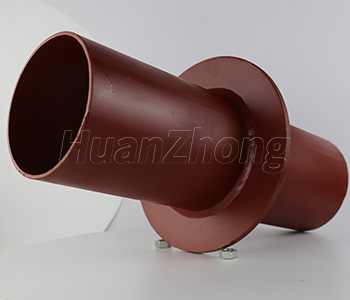Waterproof casing general description.
1. use scale: this product is suitable for civil, general industry, municipal water supply and drainage engineering buildings.
2. classification use: waterproof casing structure way is divided into flexible waterproof casing (A/B pipe type), rigid waterproof casing (A/B/C type) and rigid waterproof wing ring three types.
3. Flexible waterproof casing is suitable for areas with seismic requirements, pipeline through the wall to accept the boom and pipeline elastic deformation, or the external wall of the building with tight waterproofing requirements. Type Ⅰ seal is suitable for general waterproofing requirements, and type Ⅱ is suitable for tighter waterproofing requirements. Applicable temperature scale: -20℃~+80℃. When through-wall pipe and pump or booster equipment connected to the inlet and outlet pipe, it is appropriate to set up a flexible joint at the interface.
4. Rigid waterproof casing is suitable for the building where the pipeline through the wall does not accept pipeline oscillation and elastic deformation. A type is applicable to steel pipe, B,C type is applicable to ductile iron steel pipe and cast iron pipe.
5. waterproof casing selection or processing, should be satisfied with the pipeline design conditions and installation requirements, if necessary, waterproof casing through the wall surface thickness, axial thrust, etc. should be recognized by the structural engineer.
6. waterproof casing installation orientation should try to avoid the settlement joints, elastic joints or two closer interval of the building. Special needs, through the structural engineer selection.
7. When the material and outside diameter of the pipe through the wall beyond the scale of the set, attention should be paid to the structure of the waterproof casing way, scale and gap within the filler selected for the necessary adjustments and approvals.
8. Waterproof casing for drinking water pools, the seal, sealing paste, protective coatings, etc. should be non-toxic.
9. Waterproof casing for touching with corrosive media, the design should be based on the performance of the media and anti-corrosion requirements, the selection of applicable corrosion-resistant materials.
